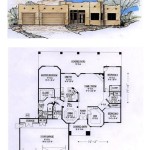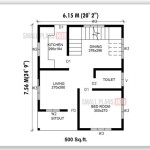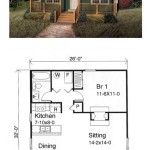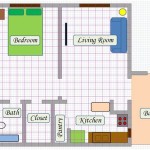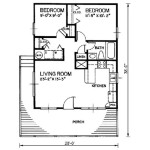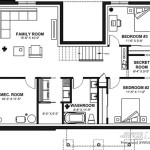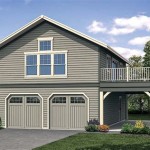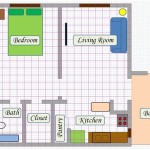Understanding the Open to Below Floor Plan: Design, Implications, and Considerations
The "open to below" floor plan, a design technique also known as a two-story living room, great room, or foyer, involves creating a large, vertical space that spans multiple levels of a building. This architectural feature eliminates the floor that would typically separate the ground floor from the upper level, resulting in a dramatic, visually impressive space that connects different areas of the home. This design choice is often implemented to enhance natural light penetration, create a feeling of spaciousness, and establish a focal point within the residence.
The appeal of an open to below floor plan lies primarily in its ability to transform the ambiance of a home. By vertically expanding the space, it creates an illusion of grandeur and openness, which can be particularly beneficial in smaller homes or those with limited square footage. The design facilitates the flow of natural light from upper-level windows down to the ground floor, brightening the entire space and reducing the need for artificial lighting during the day. Furthermore, the open area can serve as a central gathering point, fostering a sense of connection between different levels and occupants of the house.
While the aesthetic and spatial advantages are significant, implementing an open to below floor plan also presents certain challenges and requires careful consideration of various factors, including structural integrity, acoustics, energy efficiency, and safety. A thorough understanding of these aspects is essential to ensure that the design is not only visually appealing but also functional, comfortable, and sustainable in the long run. Ignoring these crucial elements can lead to problems such as excessive noise transmission, increased heating and cooling costs, and potential safety hazards. Careful planning and expert execution are paramount when incorporating this design feature.
Key Point 1: Structural Considerations and Design Implementation
The creation of an open to below space necessitates careful structural planning and engineering. Removing a section of the upper floor impacts the load-bearing capacity of the building. Structural engineers must assess the existing load distribution and design appropriate reinforcement to compensate for the removed floor. This may involve installing additional beams, columns, or altering the foundation to ensure the stability and safety of the structure.
The design process involves determining the optimal size and location of the open area. This decision should be based on the overall architectural style of the house, the desired visual impact, and the functional requirements of the space. The proportions of the open area relative to the surrounding rooms are critical. An overly large opening can overwhelm the space, while a too-small opening may not achieve the desired effect. The architect must also consider the placement of windows and other architectural elements to maximize natural light and enhance the visual appeal of the design.
Building codes typically have specific requirements for open to below spaces, particularly regarding fire safety. These codes often mandate the installation of smoke detectors and sprinkler systems to provide early warning and suppression in the event of a fire. The placement and type of fire-resistant materials used in the construction are also subject to scrutiny. Compliance with these regulations is essential to ensure the safety of the occupants and to obtain the necessary building permits.
Material selection plays a crucial role in the aesthetic success and structural integrity of the open to below space. The choice of flooring, wall finishes, and ceiling treatments should complement the overall design and contribute to the desired ambiance. Durable and fire-resistant materials are preferred, especially in high-traffic areas. The use of natural materials, such as wood and stone, can add warmth and character to the space, while modern materials, such as glass and metal, can create a more contemporary look. Thoughtful material selection is vital for achieving both the desired aesthetic and the required structural performance.
Key Point 2: Acoustic Management and Sound Control
Open to below floor plans can significantly impact the acoustics within a home. The large, open volume can create echoes and amplify sound, leading to noise transmission between levels of the house. This can be particularly problematic in homes with multiple occupants or those who value privacy and quiet.
Effective acoustic management is crucial to mitigate these issues. Strategies include incorporating sound-absorbing materials such as acoustic panels, thick carpets, and upholstered furniture. These materials help to dampen sound waves and reduce reverberation. Window treatments, such as heavy drapes or blinds, can also contribute to sound absorption.
The design of the surrounding spaces can also influence the acoustics. Creating buffer zones, such as hallways or closets, between the open area and noise-sensitive rooms can help to reduce sound transmission. Strategic placement of furniture and architectural elements can also help to break up sound waves and minimize echoes. The use of soundproofing insulation in walls and floors can further improve the acoustic performance of the space.
Addressing the reverberation and echo issues often involves a combination of strategic material selection and architectural design. Balancing the aesthetic preferences with the need for sound control requires careful consideration. Consulting with an acoustic specialist can provide valuable insights and ensure that the design meets the acoustic requirements of the occupants.
Key Point 3: Energy Efficiency and Climate Control
Open to below floor plans can present challenges for energy efficiency and climate control. The large, open volume can lead to temperature imbalances between the upper and lower levels, as warm air rises and accumulates at the top. This can result in increased heating and cooling costs and reduced comfort for the occupants.
Effective insulation is critical to minimize heat loss and gain. Insulating the walls, roof, and floors surrounding the open area can help to maintain a consistent temperature throughout the house. Sealing any air leaks around windows, doors, and other openings can further reduce energy consumption.
HVAC systems must be appropriately sized and designed to effectively heat and cool the open area. A single HVAC system may not be sufficient to adequately condition the entire space. Zoning the HVAC system allows for independent control of temperature in different areas of the house, which can help to improve energy efficiency and comfort. The use of ceiling fans can also help to circulate air and distribute heat or cool air more evenly.
Window placement and design play a significant role in energy efficiency. Large windows can provide ample natural light, but they can also contribute to heat gain in the summer and heat loss in the winter. Selecting energy-efficient windows with low-E coatings and proper orientation can help to mitigate these issues. Overhangs and shading devices can also help to reduce solar heat gain during the summer months.
Strategic landscaping can also contribute to energy efficiency. Planting trees and shrubs around the house can provide shade and reduce solar heat gain. Deciduous trees, which lose their leaves in the winter, can provide shade in the summer and allow sunlight to reach the house in the winter. Careful planning of the landscape can significantly reduce energy consumption and improve the overall comfort of the home.
Beyond these considerations, the placement of railings and balustrades along the open edge requires careful attention to safety codes and aesthetic integration with the overall design. The height and spacing of the railing components must meet specific requirements to prevent falls. The design should also complement the architectural style of the house and enhance the visual appeal of the open area. Glass panels, metal railings, and wood balustrades are common options, each offering a unique aesthetic and functionality.
Maintenance of an open to below area can also present some unique challenges. Cleaning high windows and ceilings can require specialized equipment or services. The open space may also accumulate dust and debris more quickly than enclosed areas. Regular cleaning and maintenance are essential to preserve the appearance and functionality of the space.
Finally, the resale value of a home with an open to below floor plan can be influenced by various factors, including the overall design, the quality of construction, and the preferences of potential buyers. While some buyers may be attracted to the dramatic and spacious feel of this design feature, others may be deterred by the potential for noise transmission, energy inefficiency, or maintenance challenges. A well-designed and properly maintained open to below area can enhance the value of a home, while a poorly executed design can have the opposite effect.

Sarah Dramatic Open To Below Two Y House Mhd 2024019 Pinoy Eplans

How To Read A Floor Plan With Dimensions Houseplans Blog Com

How To Read And Understand A Floor Plan Activa

50 Images Of 15 Two Y Modern Houses With Floor Plans And Estimated Cost

Please Help With Deciding On Open To Below Or Not

How To Read A Floor Plan With Dimensions Houseplans Blog Com

Tiny Icf House Plan 4300

The 11 Best New House Designs With Open Floor Plans Houseplans Blog Com

50 Images Of 15 Two Y Modern Houses With Floor Plans And Estimated Cost

Best Floor Plans With Mezzanine House Views Below

